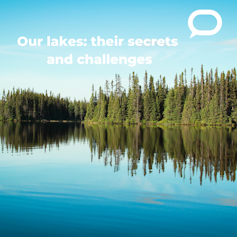WASHINGTON – Adults may ingest up to 150,000 harmful plastic particles a year – equal to eating as many as 12 shopping bags annually, according to a new Environmental Working Group analysis.
There is growing concern about the various ways that large amounts of tiny plastic particles enter the human body and the potential health risks they pose. Some studies found a link between exposure to plastic particles and an increased risk of a stroke or heart attack. These particles have also been associated with inflammation, uncontrolled cell growth, immune system disruption and other health issues.
“Imagine eating as much plastic as a shopping bag every month in your meals – that’s essentially what we could be doing without realizing it,” said Tasha Stoiber, Ph.D., co-author and a senior scientist at EWG. “Our analysis shows that adults likely consume an alarming amount of plastic particles, with serious potential health consequences. The plastics we’re swallowing pose an urgent public health risk that demands immediate attention.”
EWG’s analysis advances the debate by assessing the latest scientific research on micro and nanoplastic particles, and how much people ingest through food and beverages.
EWG scientists reviewed studies published since 2020 on plastic particles. They focused on studies that provided both lower and upper estimates of annual plastic consumption, using conservative estimates. The findings reflect this range of data, giving a clearer picture of how much plastic people may consume each year.
“Nobody wants to be eating what could equate to one bag for every month in extreme cases,” said EWG Associate Scientist and co-author Varun Subramaniam, M.S.. “The good news is that some simple lifestyle and dietary changes accessible to everyone may lower exposures to plastic particles from diet.”
At the high end, EWG’s findings suggest that people may ingest the equivalent of 12 shopping bags per year, though exposure will vary from person to person and could be as low as three bags for some. The report details how EWG calculated how many grams of plastic particles people consume from water, food and containers. Then EWG equated that to the weight of a standard grocery shopping bag to estimate the range.
These findings focus on plastic exposure through diet, with plastic cutting boards as a significant source. However, people can also ingest plastic particles through drinking water, beverages, honey, meat, seafood and vegetables, as well as from using plastic cups and takeout containers.
Plastic is one of the most widely used materials in the world, found in everything from water pipes to product packaging. As it degrades, it breaks into increasingly smaller particles, often invisible to the human eye. A significant way people are exposed to these plastic particles is through their diet, which is the focus of the analysis.
Crops can absorb micro and nanoplastics from contaminated soil and water, while seafood is continuously exposed to floating plastic particles that can bioaccumulate and cling to tissue.
Plastic packaging also plays a major role, continuously exposing foods to tiny particles during transport, storage and even as they sit on kitchen shelves for days. Even after being removed from packaging, food can be exposed to other plastic materials in the kitchen.
Due to the widespread use of plastics, people unknowingly ingest plastic particles from food, beverages, consumer products and even the air. EWG’s report provides tips for reducing exposure from well known sources, such as reducing the use of plastic containers for food storage and reheating, using stainless steel water bottles, and replacing plastic cutting boards and plastic kitchen utensils with alternatives.
For lasting change, efforts must focus on larger systemic solutions. This includes requiring companies and governments to eliminate single-use plastic, minimize the use of plastic where possible and prevent plastic waste from polluting the environment.
“Companies won’t rethink their relationship with plastics overnight, so individuals can take shorter-term, manageable steps to reduce some of their plastic exposures,” said Stoiber. “These actions can help until we achieve much broader systemic change.”
The Environmental Working Group (EWG) is a nonprofit, non-partisan organization that empowers people to live healthier lives in a healthier environment. Through research, advocacy and unique education tools, EWG drives consumer choice and civic action.















